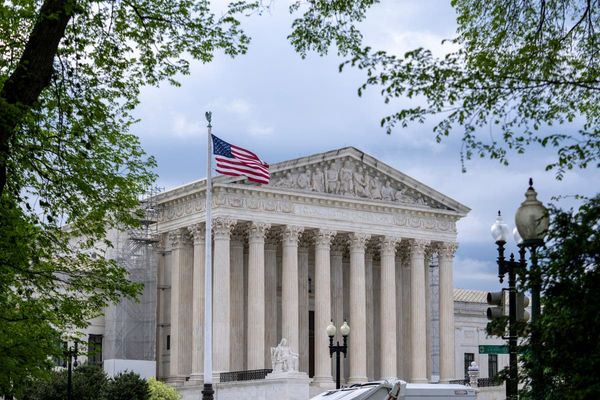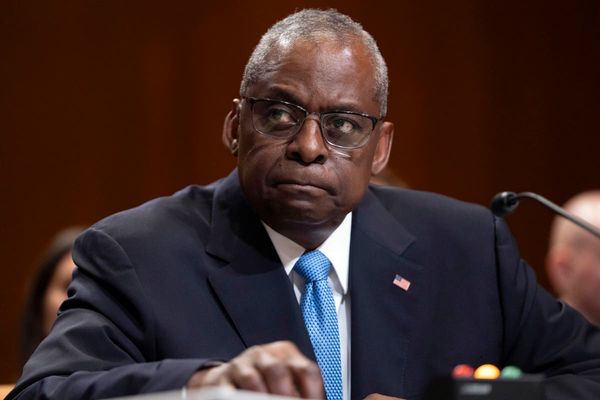It’s a typical April day: the sun blazes out of a blank sky and scorching heat hammers the earth, leaving the roads deserted, silencing even the birds. The bare-chested Magan Yadav of Bhelwa-Ramnagar village in the Madhepura Lok Sabha constituency is busy chopping fodder for his three buffaloes, which are tied tightly in a thatched enclosure. Some things never change.
“Only Yadavs win from Madhepura seat and it will be the same this time as well, whether it’s the incumbent sitting MP or the Opposition’s candidate”, he says, posing for the camera on the dusty lane.
Also Read | Parties stick to tested formulas as 5 seats of north Bihar gear up for polls
Madhepura, which lies in the flood-prone Kosi river valley, is known as the ‘Yadavland of Bihar’; only candidates from the Yadav caste have been able to win this Lok Sabha seat since 1968. Of the constituency’s more than 14 lakh voters, five lakh are Yadavs, followed by nearly two lakh Muslims and 1.5 lakh Rajput voters. A popular adage says, “Rome Pope ka, Madhepura Gope ka (what Rome is to the Pope, Madhepura is to the Yadav)”
Socialist past
The first of those influential Yadavs was none other than B.P. Mandal, who chaired the Second Backward Class Commission. Popularly known as the Mandal Commission, its recommendations were implemented by the then-V.P. Singh government at the Centre in 1990, a pivotal decision that led to the emergence of formidable regional parties in Bihar and neighborouring Uttar Pradesh. Decades earlier, Mr. Mandal, who hailed from an influential Yadav family of Murho village, was elected as the MP from Madhepura twice, in 1968 and 1977; he also served as the seventh Chief Minister of Bihar during a 30-day period in 1968.
Later, veteran socialist leader Sharad Yadav won four times, in 1991, 1996, 1999, and 2009, thuough he also lost four times from Madhepura, in 1998, 2004, 2014, and 2019. Rashtriya Janata Dal chief Lalu Prasad Yadav represented the constituency twice, in 1998 and 2004.
Splitting the Yadav vote
In 2014, heavyweight gangster-turned-politician Rajesh Ranjan alias Pappu Yadav was elected from his native Madhepura — he was born in Khurda village of Kumarkhand block — but shifted his base, along with his family, to Purnea district, from where he is contesting the 2024 election as an Independent candidate.
“The heavyweight Pappu Yadav left Madhepura Lok Sabha seat as he not only came in the third position in the 2019 Parliamentary election, with less than one lakh votes polled in his favour, but also, in the 2020 Assembly poll he again came in third, with a vote share of just 13%,” says Chandan Kumar, a senior journalist in Madhepura.
After winning in 2004, Mr. Lalu Prasad Yadav also never came back to contest Madhepura, preferring his traditional Saran constituency, considered a “safe” seat; his second daughter Rohini Acharya is contesting the 2024 election from Saran. “Both Pappu Yadav and Lalu Prasad left Madhepura seat despite coming from the Yadav caste because of the division of caste voters between Yadav candidates,” Mr. Kumar adds.
Dual clans
Madhepura has also been a bastion for socialist leaders, including Karpoori Thakur and Kirai Musahar, who represented the undivided Madhepura seat in 1952 and 1967. Madhepura town boasts a Karpoori Chowk with a bust of the leader. “The Yadavs of Madhepura have long had anti-establishment tendencies, but are divided into two clans: Krishnaut and Majhraut,” Mr. Kumar explains. Krishnaut Yadavs claim their descent from Lord Krishna, while the Majhrauts claim to be descended from Madhu, the Yadav king of Mathura.
“Being socialist in nature, the Yadavs of Madhepura do not get split on clan lines while voting,” claims Mr. Magan Yadav, 60. He still remembers and rues the devastation of the 2008 flooding of the Kosi river. He points towards the maize field outside where sandstorms hover above the swaying plants braving the brutal temperatures, which have already crossed 43 degrees Celsius. “The white sands have virtually made the soil infertile,” he says.
Incumbent vs ex-MP’s son
In the shade of a bamboo groove at Jhitkia village, Sahyog Yadav, Sudan Yadav, and Janardan Yadav are playing cards as a tractor overloaded with cattle fodder idles on the road. “The Madhepura Lok Sabha seat result may surprise you,” they say. No matter what surprises lie in store, however, the man left standing at the end of the day will still be a Yadav.
This time the incumbent NDA MP Dinesh Chandra Yadav of the Janata Dal (United) is pitted against mahagathbandhan candidate Kumar Chandradeep Yadav of the RJD, an English professor in a Patna college, but also son of former Madhepura MP Ramendra Kumar Yadav ‘Ravi’.
After delimitation in 2008, the Madhepura Lok Sabha seat includes six Assembly constituencies: Madhepura, Alamganj, and Bihariganj in Madhepura district, and Sonbarsa, Saharsa, and Mahishi in the neighboring Saharsa district. Of the six, JD-U MLAs represent four Assembly segments while the RJD and BJP represent one each.
Madhepura goes to the polls in the third phase on May 7.







